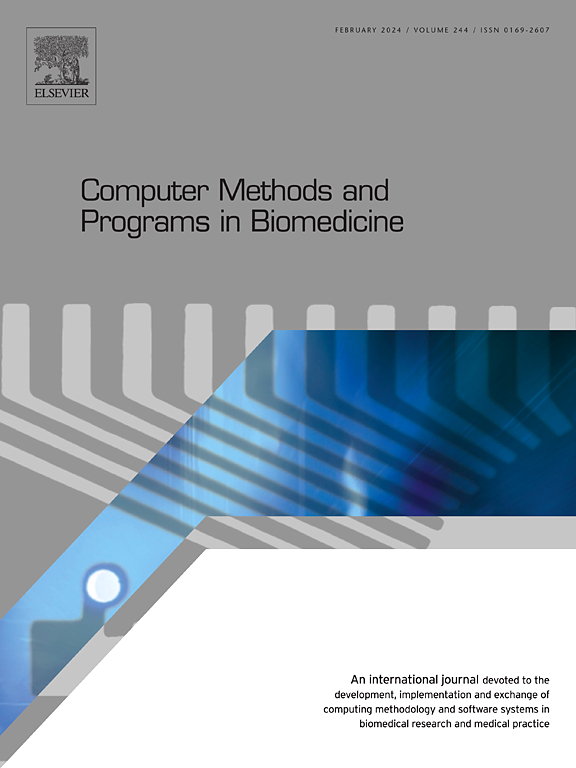Analysis of the hemodynamic impact of coronary plaque morphology in mild coronary artery stenosis
IF 4.9
2区 医学
Q1 COMPUTER SCIENCE, INTERDISCIPLINARY APPLICATIONS
引用次数: 0
Abstract
Objectives
As is well known, plaque morphology plays an important role in the hemodynamics of stenotic coronary arteries, thus their clinic outcomes. However, so far, there has been no research on how the cross-sectional shape of a stenotic lumen affects its hemodynamics. Therefore, this study aims to explore the impact of plaque cross-sectional shape on coronary hemodynamics under mild or moderate stenosis conditions (diameter stenosis degree ≤50 %).
Methods
A three-dimensional model of the coronary tree was established using CT images of a subject without coronary stenosis. Based on real CT images of patients, six types of plaque cross-sectional morphologies were created at the same location in one main left coronary artery model, controlling for 50 % and 25 % diameter stenosis, respectively. Computational fluid dynamics (CFD) simulations were performed on the six stenosed coronary models and one normal control model under the same boundary conditions. The differences in hemodynamic results among the models were compared.
Results
(1) Type III plaque caused the largest disturbance in the flow field. (2) In type IV plaque, the area with an oscillatory shear index (OSI) >0.1 accounted for 11.18 %. (3) Type V plaque exhibited the most prominent vortex flow lines. (4) Hemodynamic parameters within type VI plaques were most similar to those of normal coronary arteries. (5) Area stenosis better reflects the severity of coronary stenosis.
Conclusion
Different cross-sectional morphologies can lead to abnormalities in different hemodynamic parameters, leading to different clinical outcomes. Especially, type III plaques are most likely to cause vascular wall damage, while type V plaques warrant caution due to the risk of complications such as thrombosis. Considering plaque cross-sectional morphology can provide doctors with more information and theoretical support for diagnosis.
求助全文
约1分钟内获得全文
求助全文
来源期刊

Computer methods and programs in biomedicine
工程技术-工程:生物医学
CiteScore
12.30
自引率
6.60%
发文量
601
审稿时长
135 days
期刊介绍:
To encourage the development of formal computing methods, and their application in biomedical research and medical practice, by illustration of fundamental principles in biomedical informatics research; to stimulate basic research into application software design; to report the state of research of biomedical information processing projects; to report new computer methodologies applied in biomedical areas; the eventual distribution of demonstrable software to avoid duplication of effort; to provide a forum for discussion and improvement of existing software; to optimize contact between national organizations and regional user groups by promoting an international exchange of information on formal methods, standards and software in biomedicine.
Computer Methods and Programs in Biomedicine covers computing methodology and software systems derived from computing science for implementation in all aspects of biomedical research and medical practice. It is designed to serve: biochemists; biologists; geneticists; immunologists; neuroscientists; pharmacologists; toxicologists; clinicians; epidemiologists; psychiatrists; psychologists; cardiologists; chemists; (radio)physicists; computer scientists; programmers and systems analysts; biomedical, clinical, electrical and other engineers; teachers of medical informatics and users of educational software.
 求助内容:
求助内容: 应助结果提醒方式:
应助结果提醒方式:


